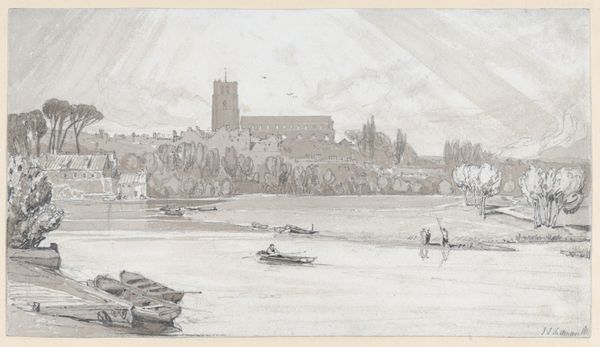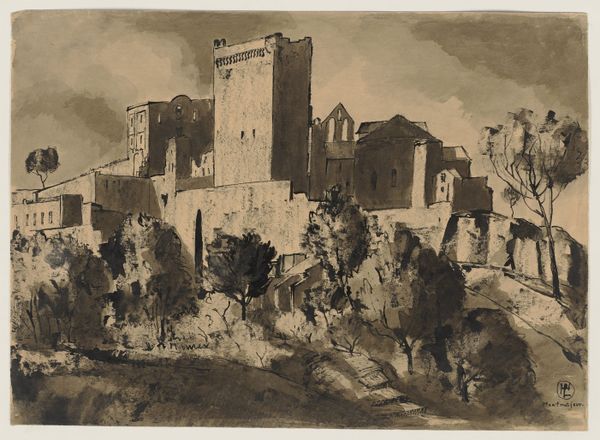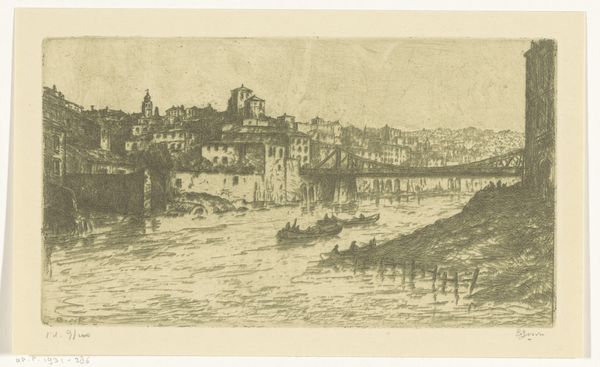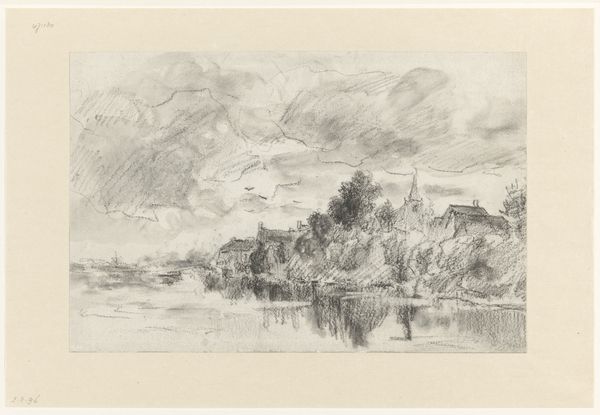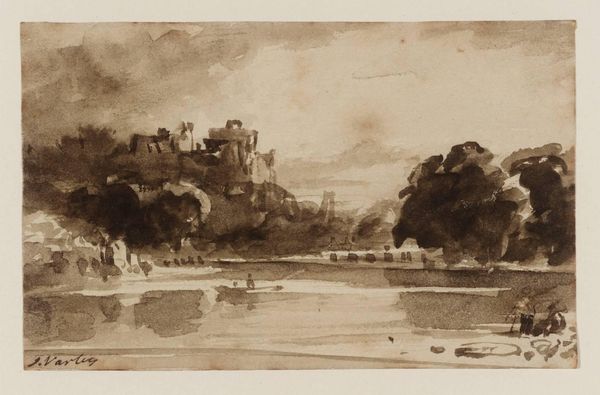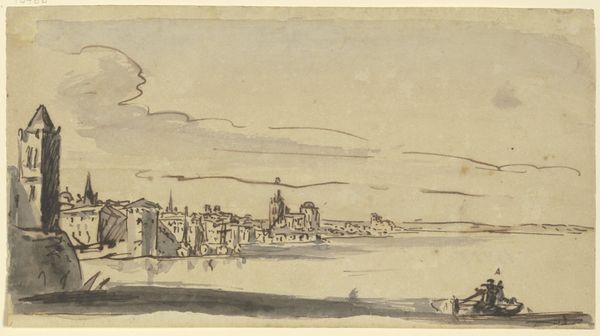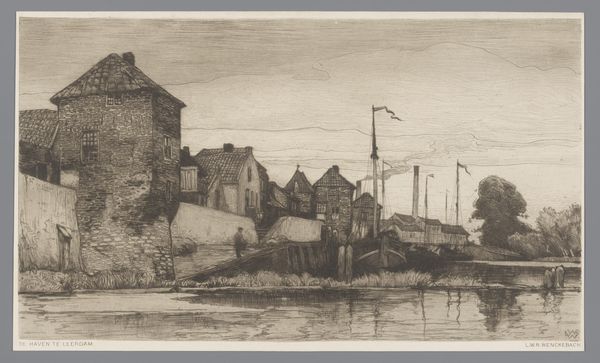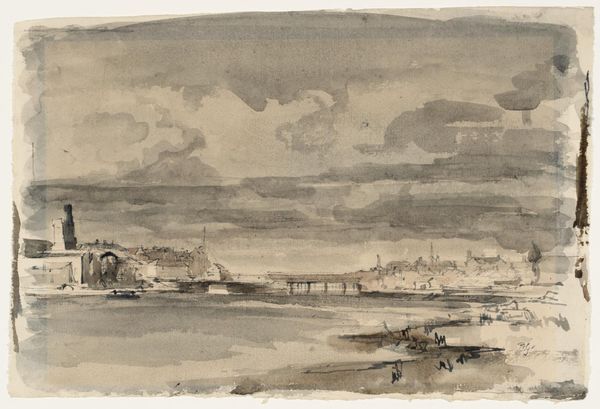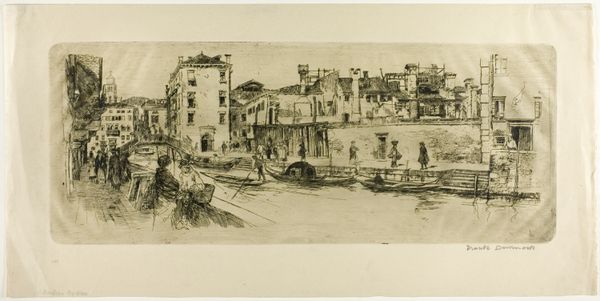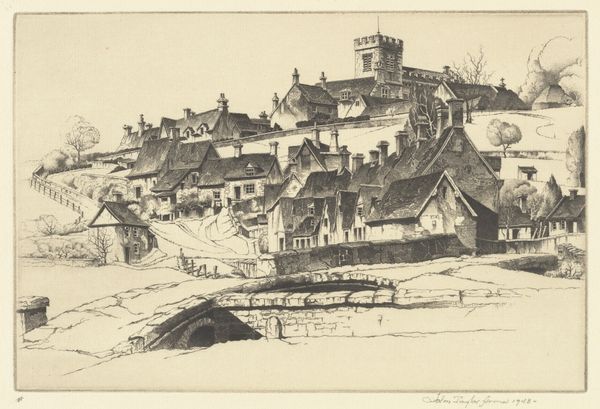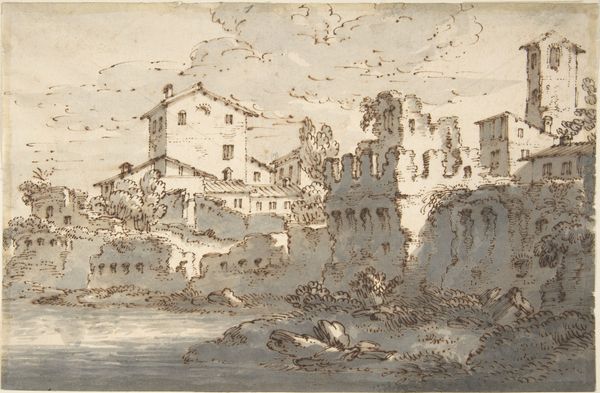
drawing, paper, ink, architecture
#
drawing
#
landscape
#
paper
#
ink
#
architecture
Copyright: Public Domain
Hermann Lismann made this artwork, “Die Burg Chinon und das Ufer der Vienne,” with brush and India ink. It is evocative of its time, but also of a much earlier historical period. It's easy to think of Lismann as simply capturing a picturesque view of Chinon Castle in France, but this work is also tied to early 20th-century German debates about national identity and cultural heritage. Chinon Castle's striking silhouette immediately brings to mind the power structures of medieval France, and its visual codes would not have been lost on Lismann's contemporaries. Art historical research reveals that during this period, German artists and intellectuals were increasingly interested in the symbols of national strength. Medieval architecture was often seen to embody values of stability. Examining Lismann’s work in its proper social and institutional context allows us to consider what it meant to evoke the past in a rapidly modernizing Europe. This piece is a reminder that the way we look at history is always connected to the present.
Comments
No comments
Be the first to comment and join the conversation on the ultimate creative platform.
